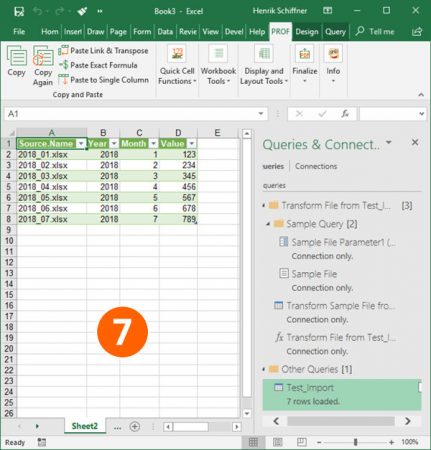5 Simple Steps to Combine Excel Tabs into One Sheet

In today's data-driven environment, working with multiple tabs in Microsoft Excel is common. Whether you're consolidating financial reports, customer data, or project updates, the need to combine Excel tabs into one efficient sheet can significantly enhance productivity and ease analysis. Here, we explore the five simple steps to combine Excel tabs into one sheet, ensuring your data management is streamlined and seamless.
Step 1: Prepare Your Excel Workbook

Before you begin the consolidation process, ensure that all tabs you intend to merge are within the same Excel workbook. This preparatory step involves:
- Checking that data is formatted consistently across tabs. Misalignments can cause issues in merging.
- Ensuring no hidden rows or columns that might be overlooked.
- Identifying and handling duplicate headers if necessary.
Step 2: Use VBA or Manual Copying

To combine tabs, you can either use Excel’s powerful VBA (Visual Basic for Applications) scripting or manually copy-paste each tab into one master sheet. Here’s how:
- VBA Option: Write a macro to automate the process:
Sub CombineTabsIntoOneSheet() Dim ws As Worksheet Dim masterWs As Worksheet Dim lastRow As Long Dim i As Integer' Assume the first sheet is where you want to combine data Set masterWs = ThisWorkbook.Sheets(1) ' Clear existing content from the master sheet masterWs.Cells.Clear For Each ws In ThisWorkbook.Worksheets ' Skip the first sheet if it's the master sheet If Not ws.Name = masterWs.Name Then lastRow = masterWs.Cells(masterWs.Rows.Count, "A").End(xlUp).Row + 1 ws.UsedRange.Copy masterWs.Cells(lastRow, 1) End If Next ws ' Optionally, auto-fit columns for better readability masterWs.Columns.AutoFit
End Sub
- Select all data in a tab.
- Right-click and choose “Copy” or use Ctrl+C (Cmd+C for Mac).
- Navigate to your master sheet, right-click, and select “Paste” or use Ctrl+V (Cmd+V for Mac).
- Repeat for each tab you want to combine.
Step 3: Merge with Power Query

An alternative method uses Excel’s Power Query, which is particularly useful for large datasets and consistent data structures:
- Go to the ‘Data’ tab, then ‘From Other Sources’ and select ‘From Table/Range’ or ‘From Sheet’ if available.
- From the ‘Home’ tab in Power Query Editor, choose ‘Combine’ > ‘Merge Queries’, then ‘Append Queries’ to bring all your tabs together.
- Once you’ve merged your queries, click ‘Close & Load’ to send the combined data back to Excel.
⚠️ Note: Power Query is available in Excel 2010 and later versions. Earlier versions might require manual or VBA methods.
Step 4: Data Validation and Clean-Up

After combining your data, it’s crucial to validate and clean it:
- Check for and remove duplicate rows which might have been copied unintentionally.
- Ensure no unexpected gaps exist between rows by using Excel’s ‘Remove Blanks’ feature.
- Use Excel functions like TRIM to remove extra spaces or TEXTJOIN to concatenate split text fields.
Step 5: Finalize and Format Your Master Sheet

Your newly combined dataset might look cluttered. Here’s how to tidy it up:
- Sort the data for better readability.
- Use conditional formatting to highlight key information.
- Create tables for better data management and styling:
| Column Name | Data Type |
|---|---|
| Date | Date |
| Sales | Number |
| Region | Text |

In conclusion, by following these five steps, you can efficiently combine Excel tabs into a single, comprehensive sheet. This approach not only enhances data analysis but also reduces the time and errors associated with manually managing multiple tabs. Remember to clean and format your data for the best results, ensuring your combined dataset is both accurate and visually appealing.
Can I combine tabs from different Excel workbooks?

+
Yes, you can. You would need to copy the tabs or use external links to refer to data in different workbooks when using VBA or Power Query.
What if my tabs have different column headers?

+
You might need to manually align headers or use a more complex VBA script to handle discrepancies in column names or structures.
Are there any limitations to using VBA or Power Query for combining sheets?

+
Both methods have some limitations. VBA can be slower with very large datasets, and Power Query might not handle dynamic data well, such as formulas that change based on user input or external data sources.